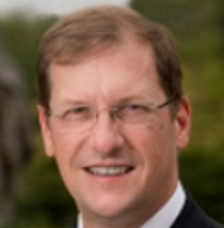Harvard fund CEO Stephen Blyth resigns
by charles | Comments are closed07/29/2016
7-28-16 Boston Globe: Harvard fund CEO Stephen Blyth resigns
Read More »7-27-16 Harvard Endowment’s Blyth Resigns
by charles | Comments are closed07/28/2016
7-27-16 Bloomberg News: Harvard Endowment’s Blyth Resigns
Read More »Posting: Head of Harvard Investment Group—Must Have Low Job Security Needs
by charles | Comments are closed07/28/2016
7-27-16 Nonprofit Quarterly: Posting: Head of Harvard Investment Group—Must Have Low Job Security Needs
Read More »Philip Zecher
by charles | Comments are closed07/17/2016
Philip Zecher, First CIO at MSU
Michigan State University hires their first chief investment officer. Background: Partner at EQA, Co-founder at Investor Analytics, PhD, Physics MSU, BS, Physics Ohio University
Read More »The Harvard Endowment: Time for some Creative Destruction?
by charles | Comments are closed07/13/2016
[Note: we published this piece on July 12, before Harvard announced its hire of N.P Narvekar and its disappointing returns for FY 2016]
It’s been ten years now since Jack Meyer stepped down as head of the Harvard Management Company, while David Swensen – now in his 31st year – has carried on at the Yale Investment Office.
Each endowment has pursued its own distinctive management model: HMC with its “hybrid” internal/external approach, versus YIO’s exclusive reliance on cherry-picked external managers.
We can now call the winner: It’s Yale.
And it’s time for HMC to undertake a major re-think of its business.
Six out of 13 members of the Harvard Corporation board are Harvard MBAs, and they understand what the stakes are.
President Drew Gilpin Faust has ex-officio seats on both the HMC board and the Harvard Corporation board (where the real power lies). But the chair of the HMC board is Paul J. Finnegan, who also happens to serve on the Corporation board as Treasurer and chair of the finance committee.
Mr. Finnegan is co-CEO of Chicago-based private-equity firm Madison Dearborn Partners. He has been deeply enmeshed in Harvard’s affairs for many years and is highly respected.
See: http://news.harvard.edu/gazette/story/2014/05/finnegan-new-harvard-treasurer/
Currently, Harvard harvests about 4.3 percent of endowment AUM annually. In 2015 that amounted to $1.6 billion. And that powered thirty-five percent of the school’s budget. (Off the record, the endowment’s contribution is greater.)
Harvard has earned an annualized 7.6 percent over ten years, versus Yale’s 10.0 percent.
It’s clear that an additional 2.4 percent annualized over ten years would have left Harvard with much more than a mere $37.6 billion endowment. And that difference would have added hundreds of millions per year to their operating budget.
Read More »

